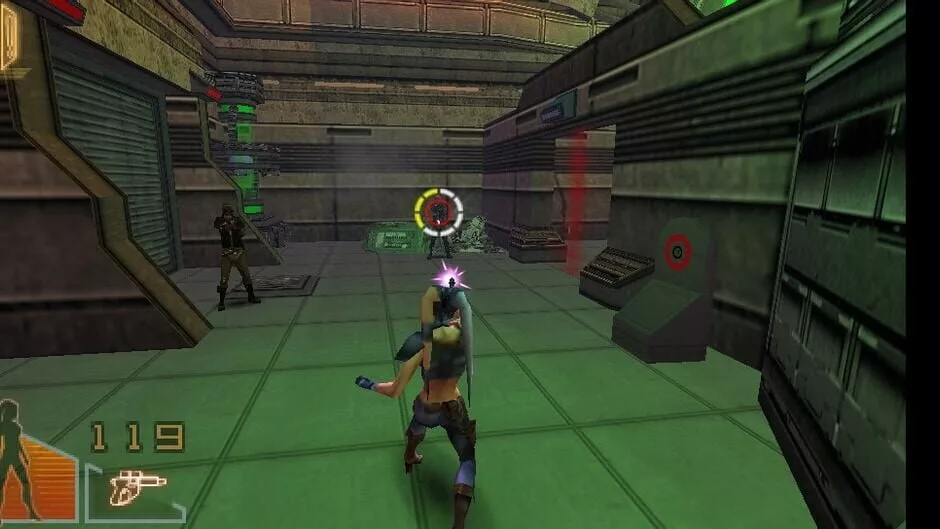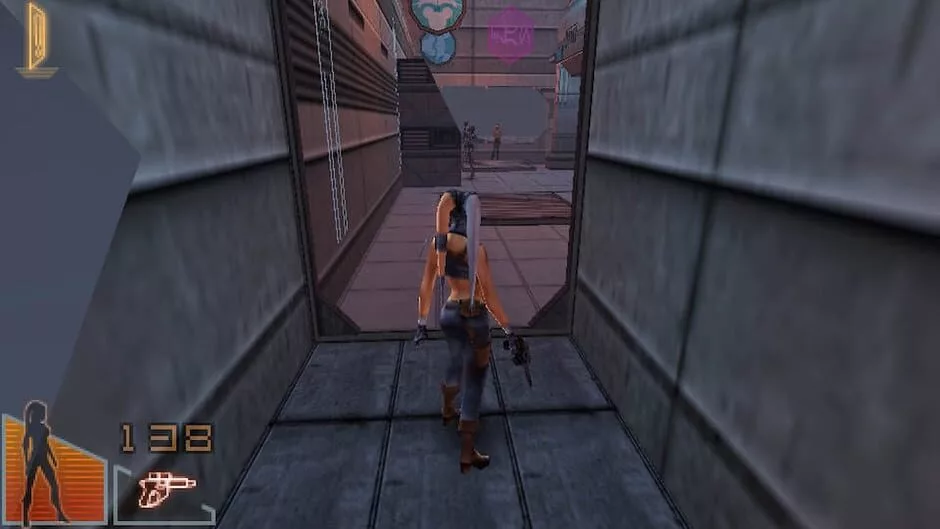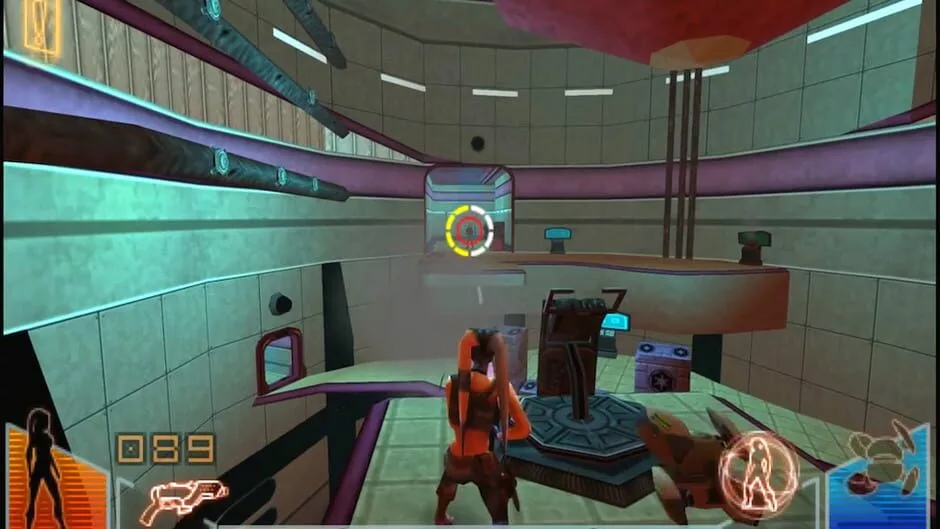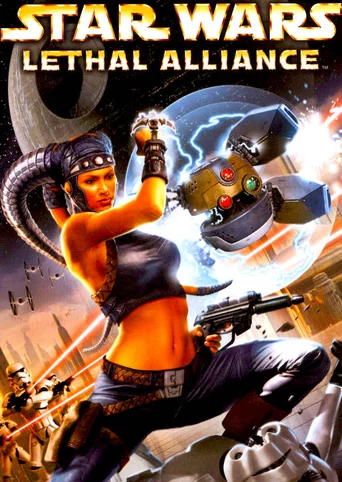
Star Wars: Lethal Alliance (2006)
Genres:Adventure, Fighting
Themes:Action, Science fiction
Game modes:Single player
Story:To capture the plans for the Death Star and make it back home safely, players must guide Rianna Saren and her trusty droid Zeeo through a variety of Star Wars environments while avoiding or attacking Imperial soldiers and their allies. Rianna is gifted in combat and Zeeo comes in handy for unlocking security doors, reaching high places, and bypassing dangerous areas. The story of Star Wars: Lethal Alliance unfolds between Episode III and Episode IV, when Princess Leia recruits the duo to steal the plans so the Rebels may learn any weaknesses in the massive weapon. Players will explore such areas as Tatooine, Despayre, Alderaan, and Danuta while interacting with characters including Boba Fett, Darth Vader, and Kyle Katarn. The PSP features various mini-games and multiplayer Twil'lek vs. Twi'lek combat over a wireless network.Show more
Vote to bring this game to GOG and help preserve it.331
My grandfather got me this game (he was a big Star Wars fan), I remember playing it on my Nintendo DS... It was fun but at some point I remember getting stuck and after a few attempts I gave up and never finished the game. I was always disappointed that I couldn't make it past at that time but perhaps I might now I'm an adult? Would love to have another go at it, this time on the PC :) ...My grandad has since passed away but I'm still determined to make the gift worth his purchase.
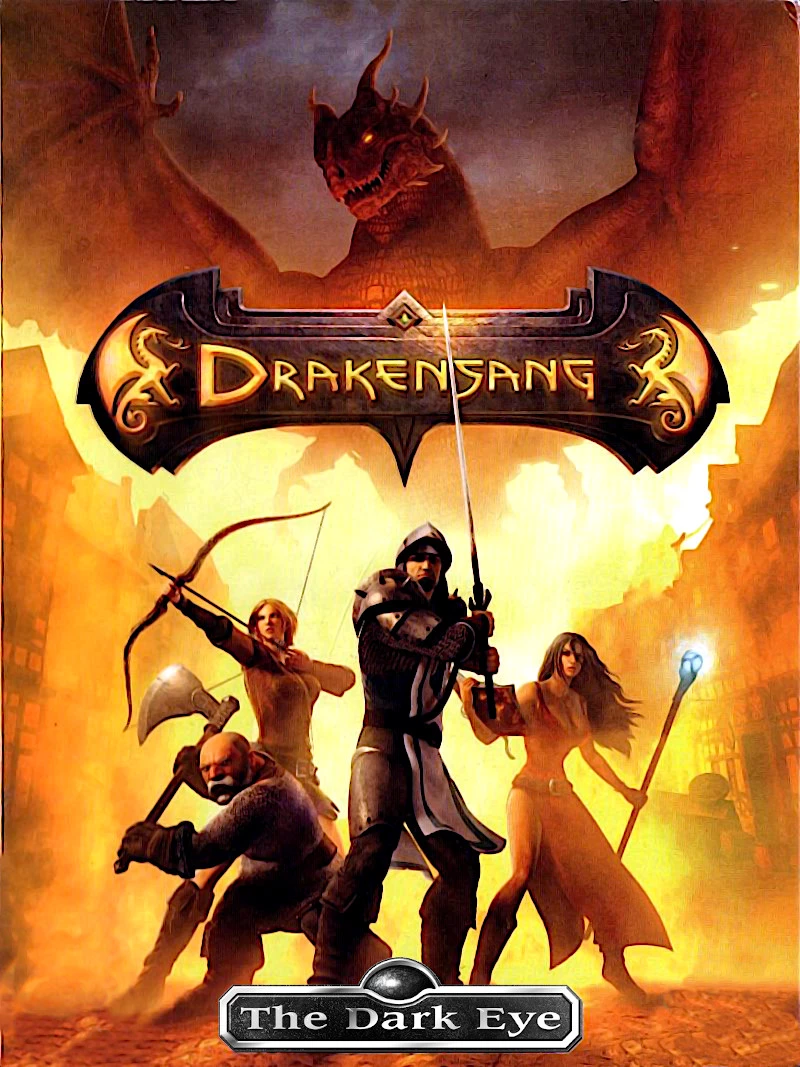
Drakensang: The Dark EyeDrakensang is a third-person party-based RPG based on the pen & paper role-play rules of The Dark Eye. Drakensang is the first PC game for over 10 years to be based on Germany's most successful and popular role-play system.
Drakensang builds on the pen & paper rules as applied in version 4.0. The developers have optimized the rulebook specially for the PC realization in order to make the game more accessible. But the essential qualities and the depth of the original rules have not been compromised.Open world Fantasy Historical Sandbox

Death GateDeath Gate is a classic adventure game from the much revered Legend Entertainment. The studio is known for developing games that include exceptionally well crafted puzzles and a wacky sense of humor which frequently breaks the fourth wall and plays to a wide assortment of offbeat puns. Moreover, the company has emerged with a winning streak of fantasy and sci-fi games based on popular literature adaptations. The most famous of these are Frederick Pohl's Gateway and Terry Brooks' Shannara.
In 1994, Legend Entertainment has chosen to adapt not 1 book but the whole series of 7 books by Margaret Weis and Tracy Hickman known as The Death Gate Cycle. The original release of the game even includes a special gift for fans of the book series, namely an exclusive short story written by the same authors that tells some of the history of the mysterious Assassin's Guild from the series.
In Death Gate, the player is cast in the role of a freshly freed Patryn—a young, brave wizard named Haplo. By his deeds in the Labyrinth, he has gained Xar's trust to be sent as a scout to the other 4 realms. The way between them leads through a mystical portal known as the Death Gate. For his journey, Haplo is handed not a single but several quests to complete. He must first explore the realms, learn about the new lands, and find the pieces of the World Seal that will allow the reformation of the world to its original whole. He must also retrieve as much of forgotten magical lore as he can, and find runes that will allow him to enter all the other realms. Finally, and most importantly, he must find out what has happened to the Sartan who seem to have vanished somewhere long ago, so that Xar will be able to bring them to the proper Patryn justice.
The game, by taking inspiration from the first 4 books, creates a certain unique experience for the player that stands out among other fantasy adventures. There is an unusually layered structure based on the initial premise of the 5 separate realms, since the consequences of the sundering run much deeper than mere differences in landscapes. From realm to realm life conditions vary enormously, including geography, history, fauna, flora and astronomical bodies. For each realm, the population is divided into very specific societies, although many attributes of each race remain common. Several royal families, powerful guilds, and wealthy, independent merchants all have their own specific goals and ambitions that are not at all connected to the grand schemes of the Patryn and the Sartan, which they mostly are unaware of at this time after centuries of their absence. The distinctiveness of each culture's circumstances and the individual diversity of the larger and smaller schemers within the cast of characters give a special magic and wonder to the proceedings in the game, especially when the player visits a new realm for the first time and starts exploring it. The worlds possess a mysterious, intriguing flavor, but with a touch of whimsical surprises from nearly everywhere. Each encounter with Xar between travels reveals more information concerning the whole mechanics that connect these realms.
Death Gate contains some exceptionally good voice acting. This is especially true for Henry Strozier who plays the role of Xar. He carries a low, charismatic, and authoritative voice that perfectly befits a character with a brave heart, long experience, deep wisdom, but a good share of arrogance. He shines for good measure too, since the player will spend more time conversing with his character than any other in the game. Haplo, who is only heard in conversations, voiced by David DeBoy, does not have a plain, uninteresting voice either. He sounds slightly arrogant and lordly like his master, but also rather youthful, yet manly enough to give an air of independency.
The MIDI music in Death Gate is very well done. The compositions are perfect for an epic fantasy setting. The tunes are often light and comforting, but they can change dramatically to a more majestic tone when visiting the king's palace and to a darker motif when exploring the undergrounds of Abarrach, the vicious Labyrinth, or the deadly Assassin's Guild.
Aside from Haplo and Xar, several other characters from the books also make an appearance in the game. Many of them, however, have been greatly simplified and reduced to only episodic roles with little development. Many major characters from the books are missing altogether, most notably Alfred, whose role is crucial in bringing out Haplo's characterization in the literary originals. On the other hand, some of the memorable archetypes from the books are used in new, interesting ways. For example, a boy named Bane has been recast into a different child with a different life and social standing, though both share a very similar personality. The character that stays most true to the canon is the whimsical, crazy wizard Zifnab, who appears in all his pun infested glory. In general, the plotlines are less violent and happier than those in the books, and the characters show less moral ambiguity.
Death Gate plays like a traditional point-and-click adventure game, but like a role-playing game it is as much about being free to explore the fictional world as about following a foreordained storyline thread. There is quite a bit of narrative text, diaries, historical documents, and dialogs to sieve through. They are all well written and are rather fascinating, since everything is directly connected to the quests the player needs to complete or the puzzles the player needs to solve. There is a fine dose of humor in the game too, but nothing so unsubtle that may distract from taking the main conflicts of the story seriously. From this stance, Death Gate is actually quite a departure from the largely comical gallery of previous game titles from Legend Entertainment.
The puzzles in Death Gate are a bit on the easy side, but the enjoyment they give is very well balanced by their ingenuity. The wealth of subplots, quests, plot twists, and deceptions add a lot of tension to the player's own proceedings. There is a certain logic and buttons based puzzle that is rather hard to beat. However, the player can ask for help from the game to solve it (or even skip over it). In general, the difficulty level of the game lies somewhere between easy and medium. The player can die in the game, but there is an option available to undo the player's last fatal action.
Comparison with the books quickly reveals some of the obvious budgetary or time constraints the developer must have faced during Death Gate's development. Pryan, the realm of fire, is build of elements taken not only of this realm in its original form but also of Chelestra, the realm of water. Consequently, the latter realm has shrunken to a very limited scope in the game. The smallness of Chelestra comes in the game as a particular disappointing revelation, since it is the last of the elemental realms that the player visits.
The interface used in Death Gate has evolved from the original Legend Entertainment's interactive fiction interface. There is an always available standard list of commands (such as Take, Look at, or Use) for the player to choose from, reminiscent of Lucasarts' SCUMM interface. In addition, extra action commands specific to an object appear when it is clicked. For example, when clicking on a door, apart from the standard list of verbs, there are added options to unlock, knock, or eavesdrop on the door. There are many actions which are not necessary to complete the game but which trigger funny responses specific to the situation. Altogether, the interface is a clever compromise between the sense of freedom achieved through a text parser and the simplicity of contemporary point-and-click style.
Gameplay in Death Gate draws on a few gimmicks that are typical of role-playing games. For some parts of the game, the player is able to have a party of several characters. There is also a process of collecting magical spells, even though they have been tweaked for solving puzzles instead of combat. A spell is constructed by connecting runes in a combination. After that, it is traced in the air by Haplo with his hands to bring the spell into motion. The player will be able to learn many spells in the game, mostly from the mensch. This is an important diversion from the canon, as the mensch from the books possess a different kind of magic altogether.
The high resolution graphics of the game will remind fans strongly of fantasy literature illustrated covers. The characters are beautifully detailed in high resolution, but rarely fully animated. However, their faces are always incredibly alive, especially in conversational close-ups. When exploring the game world, the player will notice many intricate but small animations in otherwise generally static sceneries. Major events occurring in the game are partially described in narrative text and partially presented as cut scenes. Sadly, the number of background illustrations in the game is a bit limited. All locations are shown from only a single point of view. Sometimes, the player is drawn to something interesting drawn at the edge of an illustration but is unable to look closely to find out more about it.Fantasy
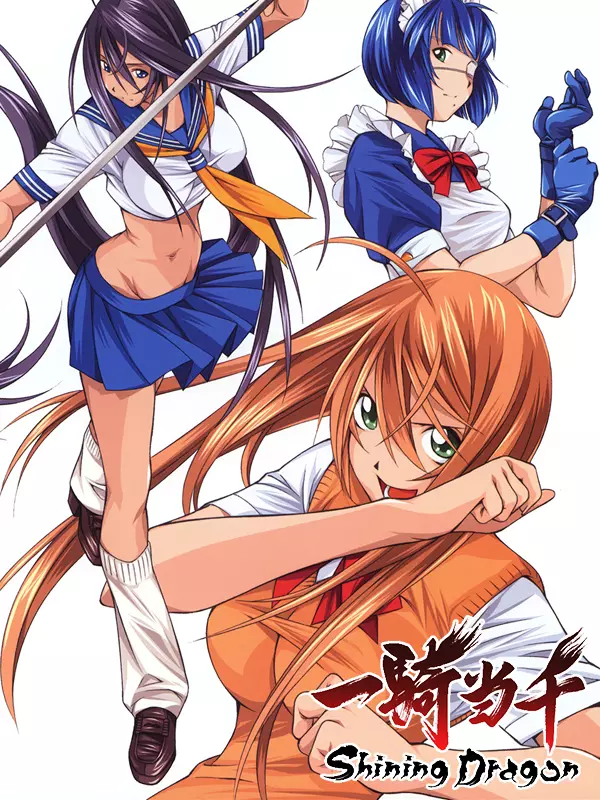
Ikkitousen: Shining DragonIkki Tousen (一騎当千 Ikkitōsen?, lit. "a Mighty Knight who matches a Thousand Knights"), also known as Battle Vixens in North America, is a manga series written and illustrated by Yuji Shiozaki. Based on the classic Chinese novel Romance of the Three Kingdoms, the series revolves around an all-out turf war in the Kanto region of Japan where fighters known as Tōshi (闘士?, meaning "fighting soldier") from seven schools battle for supremacy. The story centers on Hakufu Sonsaku, a fighter who transfers to Nanyo Academy, one of the seven schools involved in the turf war.
The manga started serialization in the seinen manga magazine Comic Gum, and the first tankōbon was released in October 2000, with a total of 24 volumes available as of September 25, 2015. The manga was licensed in North America and the United Kingdom by Tokyopop with adaptation from Keith Giffen under the title Battle Vixens, and in Australia and New Zealand by Madman Entertainment.
A 13-episode anime adaptation produced by J.C.Staff aired between July and October 2003, on AT-X and other channels. A second anime season produced by Arms aired on AT-X between February and May 2007, spanning twelve episodes. A third anime season, also produced by Arms, aired on AT-X between June and August 2008, spanning twelve episodes and featuring an all-new plotline and characters. A fourth anime season produced by TNK and Arms aired on AT-X and other channels between March and June 2010, spanning 12 episodes and introducing new schools and characters. An anime OVA was announced by Media Factory, and premiered in Japanese theaters on November 12, 2011.
The first anime season was licensed in North America by Geneon Entertainment, but it is now licensed by Funimation after Geneon withdrew from the anime market. The second anime season is licensed in North America by Media Blasters. The third anime season was also licensed by Media Blasters,but it is now licensed by Funimation. The fourth anime season is also licensed by Funimation.Action
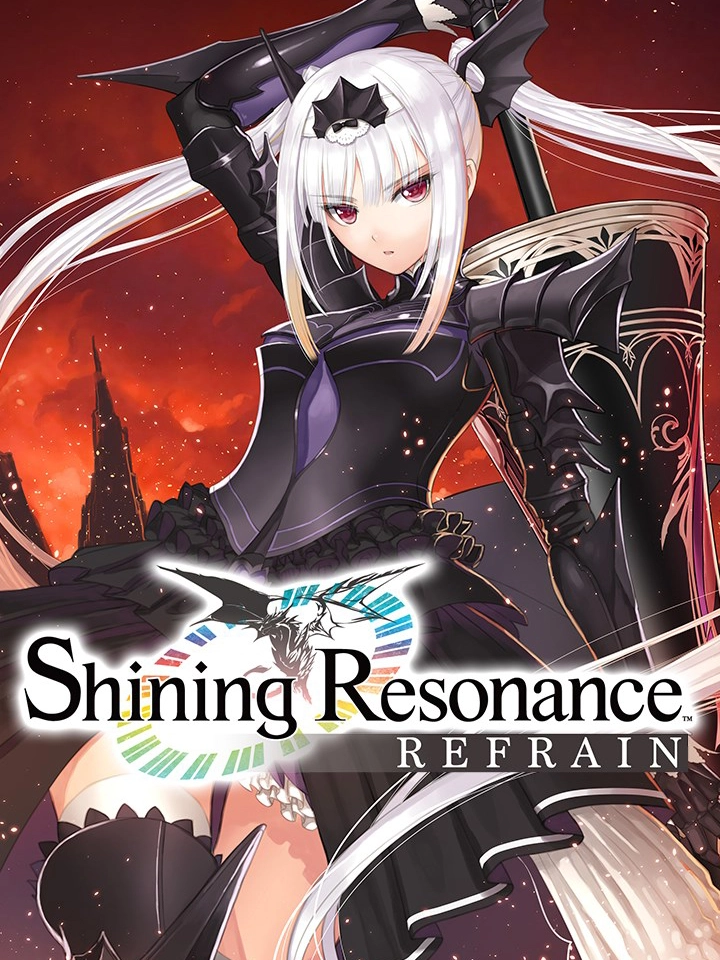
Shining Resonance RefrainA remastered version of the game Shining Resonance released in 2014 on the PlayStation 3.
It will include:
- All the DLC, more than 150 pieces,
- Refrain mode, a 'what if' story for the characters Excela Noa Aura and Jenius Aeon
- A higher resolution and runs at 60fps
- Rebalanced gameplay and UI in some places
- New Costumes
- A new theme songFantasy
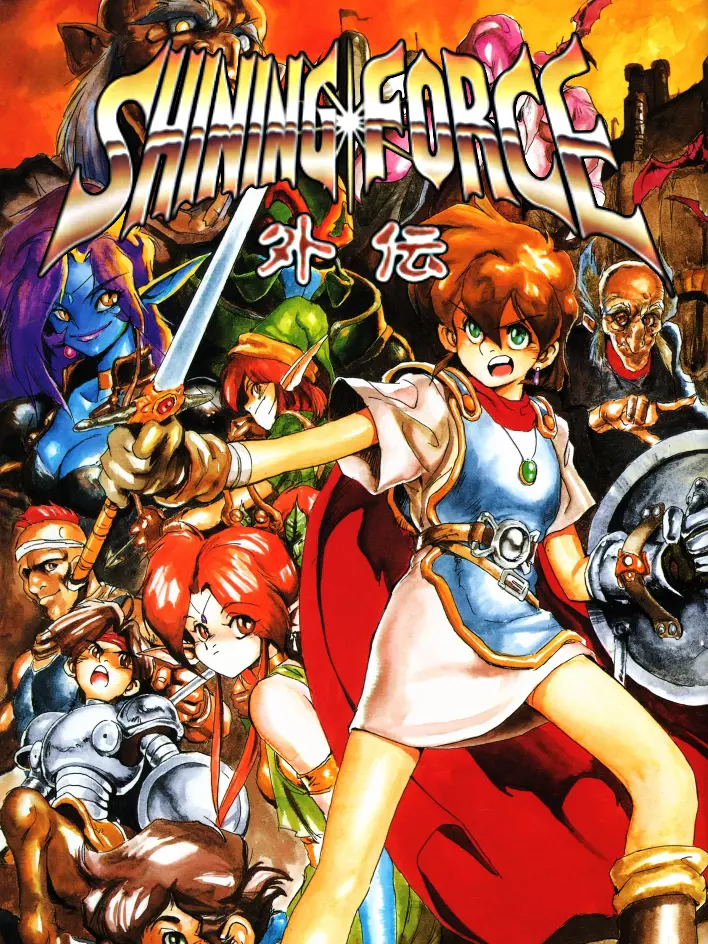
Shining Force Gaiden: Ensei - Jashin no Kuni heShining Force Gaiden is a turn-based tactical RPG. Battles take place in square grids, and each unit occupies 1 square. Units can belong to one of two sides: allies (controlled by the player) or enemies (controlled by the computer AI). Each unit can move up to a fixed amount of squares along the battlefield, determined by its Move statistic. Depending on its location relative to enemies and to allies, a unit also has the option to attack, cast a spell, use an item, search (if adjacent to a treasure chest), or stay and do nothing, all of which end the unit's turn.
Some commands, such as equipping or dropping items, don't count as actions, and the character's turn is able to continue. The order of the turns is determined by the unit's agility score and a random seed. Units can use offensive actions, such as physical attacks or offensive magic, only on units belonging to the other side and can use supportive actions, such as healing magic, stat-enhancing magic, and items, only on units belonging to the same side.
This game (together with Shining Force: The Sword of Hajya) was later given a remake named Shining Force CD, released on the Sega CD. This remake also saw a western release to both North America and Europe and the full english title was "Shining Force Gaiden: Towards the Root of Evil".
In 2013 the Game Gear original game got ported to the Nintendo 3DS Virtual Console (Japan only).Fantasy
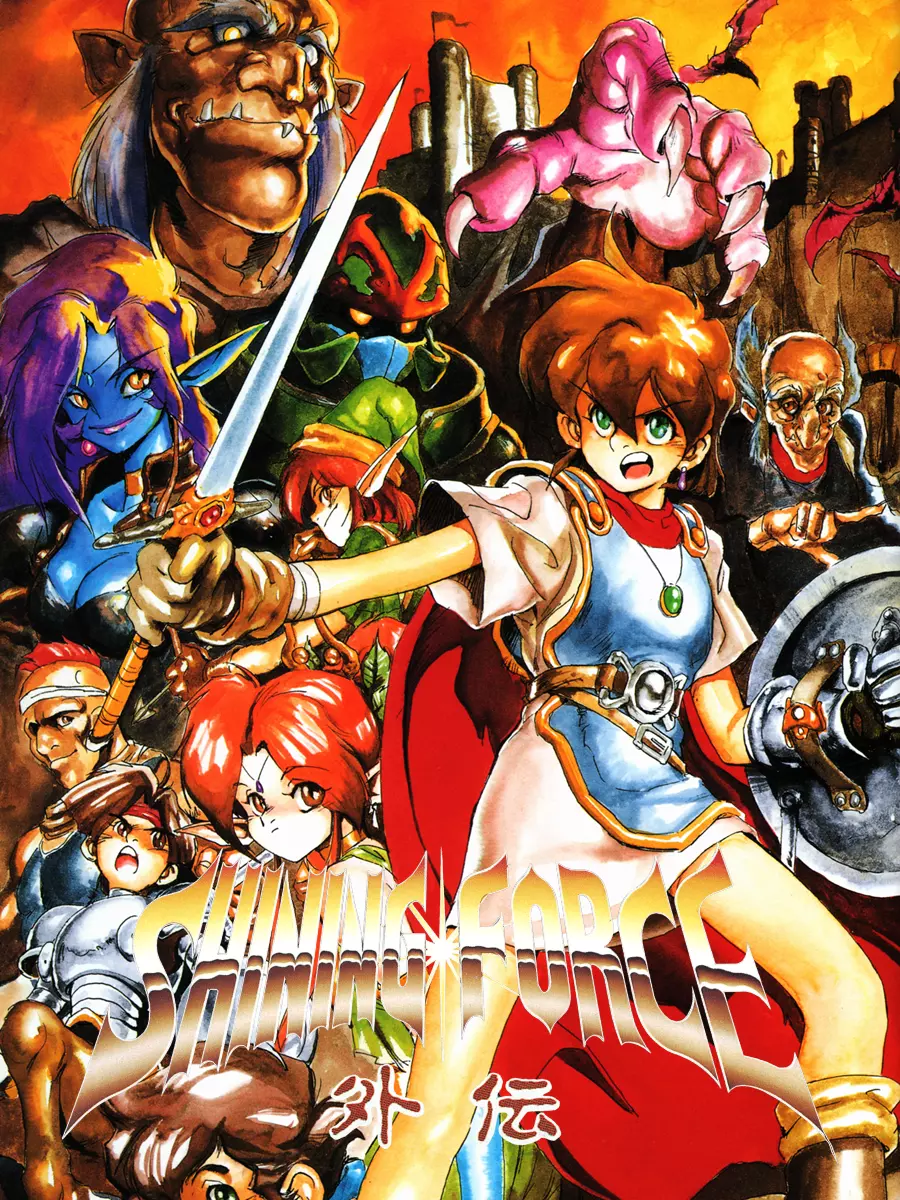
Shining Force GaidenShining Force Gaiden is a tactical role-playing game.Fantasy

Callahan's Crosstime SaloonCallahan's Crosstime Saloon is a puzzle-solving adventure game based on Spider Robinson's series of stories about the unusual patrons of Callahan's bar. The characters in the game are taken from the first book of the series, though their stories are original. The game's world is composed of still screens viewed from first-person perspective. The interaction is point-and-click, with context menus appearing when the player attempts to interact with an object on screen.Fantasy Historical Science fiction
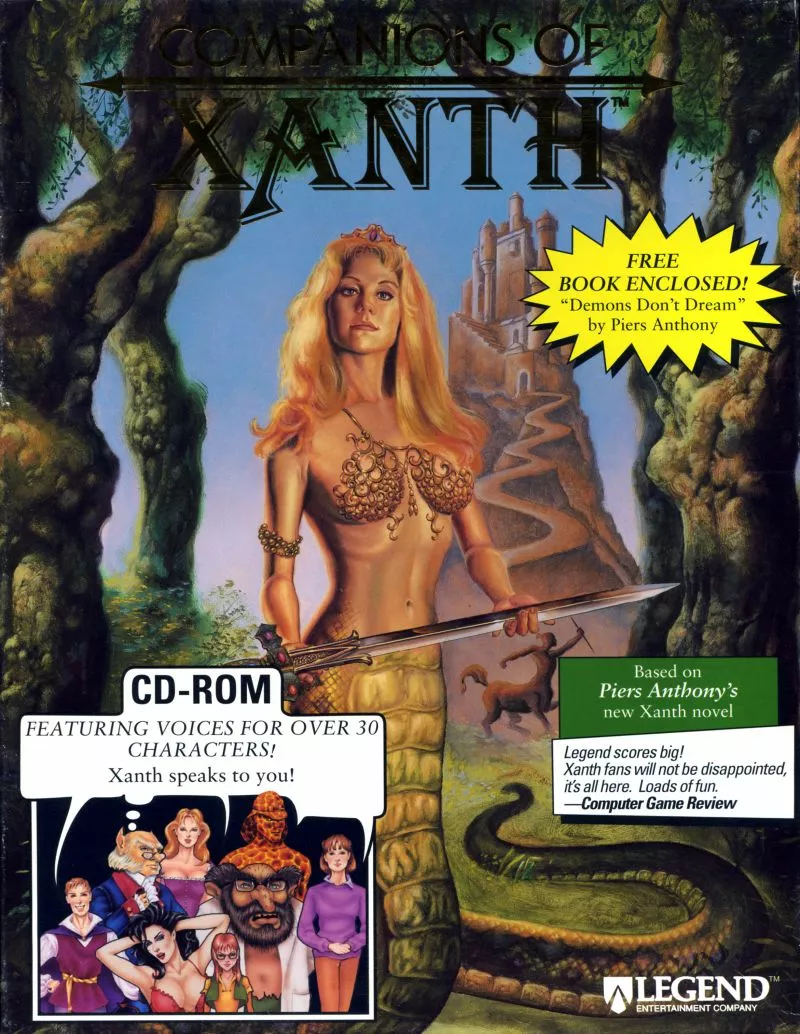
Companions of XanthCompanions of Xanth is an adventure game published in 1993 by Legend Entertainment. The game is based on Piers Anthony's Xanth novels and loosely follows the plot of his novel Demons Don't Dream, in which a young man uses a computer game to enter and explore the world of Xanth.
Typical of Piers Anthony's novels, the game is filled with puns and visual gags, and some knowledge of the Xanth universe is helpful; for those players who haven't read any of the Xanth novels, an in-game 'Com-Pendium of Xanth' is provided to the player for the majority of the game.Fantasy
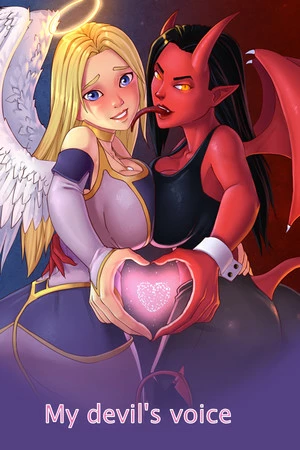
My devil's voiceThe infernal authorities entrusted the Ambitious Demon with a new business - to look after a small town. He is already ready to lead the inhabitants to the most terrible manifestations of the Fall in their lives.Erotic
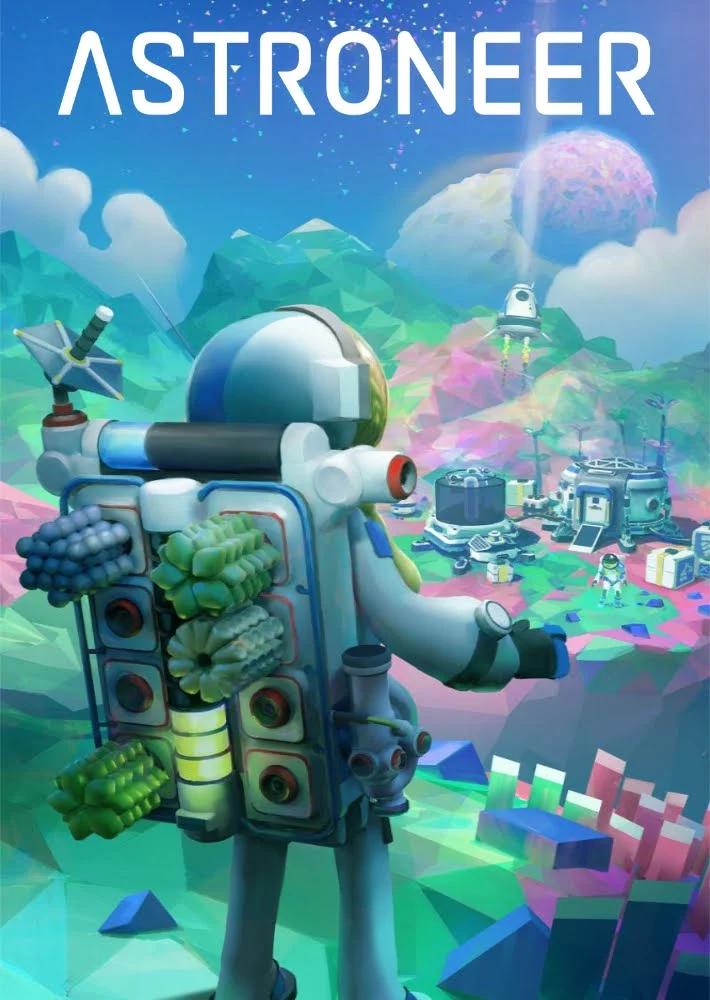
AstroneerExplore and exploit distant worlds in a game of aerospace industry and interplanetary exploration. With your gun you can reshape the landscape around you and gather resources. On your journey you come across special artifacts that will provide you with research points, in order to unlock new technologies. These include rovers and spaceships, in order the expand your reach on the planets in the solar system. The game also has a co-op mode, allowing players to explore the planets with their friends.Action Science fiction Sandbox Kids

